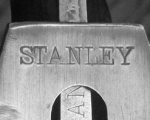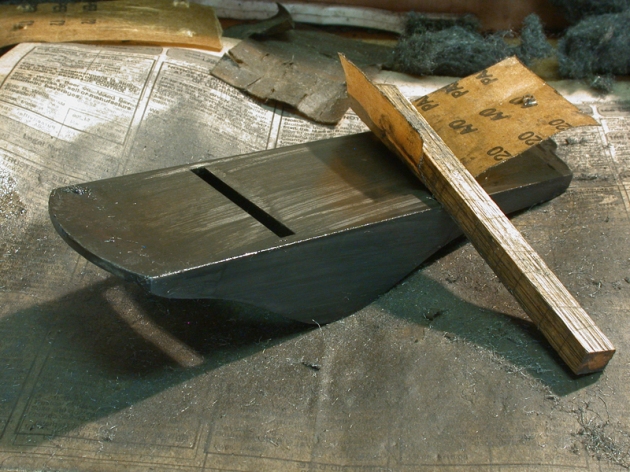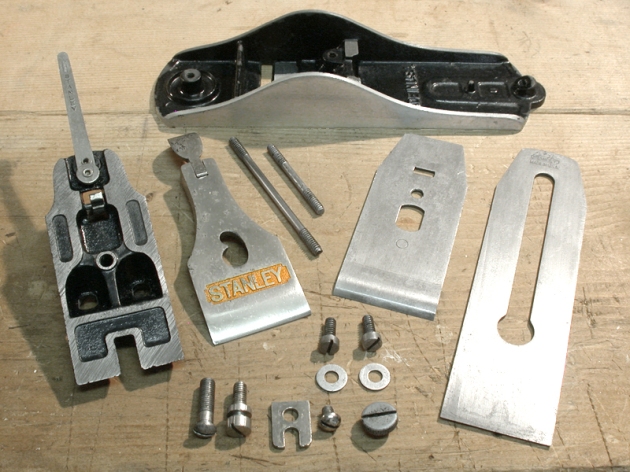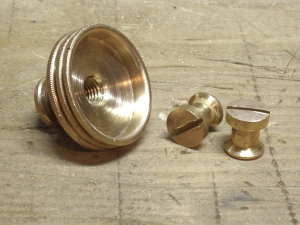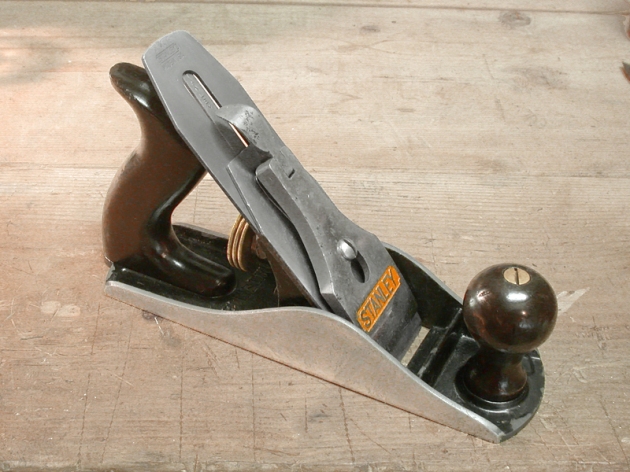Solving Those Pesky Blade Depth Frustrations
February 22, 2015 Leave a comment
New users of hand planes frequently have trouble figuring out just how to get the iron (blade) to fit through the mouth on the plane’s body. I get this question in both emails and I also see it reflected in the search parameters for those who visit the site. The challenge is to get everything set so the iron extends through the mouth without jamming up at the front of the opening.
Well fear not, for here is a simple illustrated guide to getting it done quickly and hopefully without frustration!
There are basically 5 things that have to be set correctly in order for shaving wood to begin:
- The iron must be attached to the cap iron correctly, with the cap iron attached to the flat unbeveled side of the iron. This may very well be the greatest cause of problems. The cap iron should be positioned to within about 1/32″ to 1/16″ of the cutting edge of the iron. (Figures 1 and 2)
- The frog must be positioned correctly, neither too far forward or too far toward the rear. There’s room for adjustment, of course, but it’s a good idea to start with it aligned with the rear edge of the mouth. You can then move it forward to fine tune the cut as appropriate. (Figures 3 and 4)
- The iron and cap iron assembly (once screwed together) must be positioned absolutely flat against the face of the frog. You may have to jiggle it around a little to make sure it falls into place over the frog’s adjust yoke. (Figure 5)
- The Lever Cap must be set with enough pressure to hold the iron firmly, but not so tight that the depth adjustment can’t work. There’s a sweet spot there, you just have to find it through trial and error.
- Use the lateral adjustment to align the cutting edge so it’s parallel to the mouth opening. In some cases you may have to tap the edge of the iron a little to get into a workable position. I use a small brass hammer so as not to mushroom the edge of the iron, but it’s not critical. (Figures 6 – 8)

Figure 2 – View from the bottom, the attachment screw should be on the same side as the iron’s beveled edge

Figure 3 – Loosen the frog bolts (blue arrow) and position the frog so it aligns with the rear edge of the mouth (red arrow)

Figure 4 – Stanley planes made after 1907 have a frog adjustment screw, which is used to easily fine tune the position of the frog.

Figure 8 – As you turn the big brass adjustment knob, the iron will move forward and extend down through the mouth opening just enough to shave wood!
Note that if you’re doing fine finishing work you may need to go back and move the frog forward slightly to reduce the space between the front of the mouth opening and the cutting edge. This space should approximate the thickness of the shavings you expect to produce, so it’s typically very small on smoothing planes, while a little larger on jointer and fore planes.
Hopefully this provides answers to questions and solves one of the initial frustrations when using hand planes for the first time!













